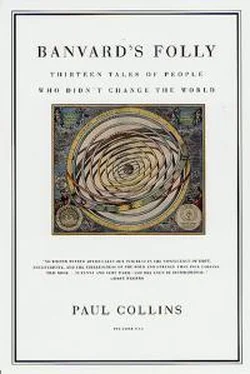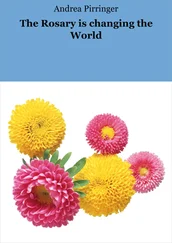.... [So] when I had thus devised and settled every machine as a whole, I undertook to dissect it and make separate drawings of each part, accurately figured for dimensions, and to take these separate parts of the several machines and get them made: some in Manchester, some in Glasgow, some in Liverpool, and some in London, so that no engineer could ever guess what these parts of machines were intended to be used for.
Quietly, he set about building a small factory in a London suburb. It had only one entrance and no windows. And once the factory was running, no worker was allowed to see more than a fraction of the interior--ever. Time and again, industrial spies from Nuremberg sailed back home empty-handed.
In the end, no one really knew how the process worked ... except for Henry Bessemer. He became very rich; on the cusp of the Gilded Age, his factory provided the gilding. Had he patented his process, it would have become public domain after just fourteen years, around 1870--squarely in the middle of the greatest demand. But, without a patent, the only way to get cheap bronze powder was to go to Bessemer and his mysterious, windowless brick building.
He kept his process secret for more than forty years.
Ephraim Bull faced a special challenge: the actual process of creating the Concord grape was really no secret at all. After all, Dr. Van Mons had already been doing it for decades with pears over in Belgium. It was the result that had to be kept secret. And that was tricky indeed, because there is one absolutely crucial difference between making grapes and making bronze powder:
Grapes have seeds.
And, worse still, the vines have buds. You can clone with impunity. It was still a long way away from 1995, when the Delta and Pine Land Company's patent on the "Control of Gene Expression" resulted in the much-reviled "terminator seeds." In the nineteenth century the only way to keep seeds from proliferating was through food processing, not genetic engineering. Bull needed to somehow sell the sweetness and flavor of the Concord grape without actually selling the grape --to sell the golden eggs but not the goose. But in 1854 there was simply no way to do this.
Bull's life became occupied by other pursuits; in 1855, just as his profits were vanishing, he was elected to the Massachusetts house of representatives.
The Concord grape had already become so famous that his colleagues sensibly appointed Bull chairman of the committee on agriculture. And as the years passed, he became a fixture of Concord life and lore: a member of the school board, a recruiter during the Civil War, and the caretaker for Hawthorne's house while the writer was off on diplomatic duty in Britain. Although Bull was a rather neglectful caretaker, the families stayed close--sometimes Ephraim's daughter Mary would wander into the neighbor's backyard, wanting another drawing lesson from Mrs. Hawthorne.
Yet Bull was a changed man. Although he continued breeding grape varieties for the rest of his life, he refused to let anyone else have them. His hoarded labors were enormous and exacting: "From over twenty-two thousand seedlings,"
he once remarked, "there are twenty-one which I consider valuable." The first was the Concord; the next twenty, which visitors described as perfectly good varieties of red and white grapes, never made it to market. It was not wise to ask Bull about the notion of selling them.
"There are no honest nurserymen," he'd snap. "I shall be cheated."
Meanwhile, he was to watch his Concord grape flourish and create fortunes around the country. Millions of acres were cultivated, and by the end of the century more Concords were being grown in the United States than every other grape variety combined. They were immensely popular for very good jelly and for very bad wine.
It is not impossible to make a decent wine from Concord grapes, but--like most native varieties--they have a "foxy" undertone that spoils the delicate flavor of any good wine. There are ways for a vintner to remove this foxiness, but cheap winemakers didn't bother. The vintner George Husmann complained that what winemakers were doing with the Concord was "reprehensible"--"These gallonizers have done a great deal of mischief by bringing their trash before the public, and calling it wine." But the Concord was such a hardy grape, and the profits from hooch jugs so good, that vintners hardly cared. Much later, during Prohibition, tipplers could even buy a thinly disguised fermentation kit called Vine-Go, designed to allow you to turn your virtuous Concord grape juice into really wretched wine.
Bull watched from the sidelines as his creation was perverted to enrich others. He could only think: it didn't have to be this way.
He was right.
Bull, perhaps, was born in the wrong time. There was a way to sell the grape essence without selling the seed: grape juice and jelly, manufactured and packaged with the latest in pasteurization and bottling technology. Had Bull been able to do this in 1854, his life might have turned out very differently.
But the fortune fell to someone else.
Thomas Bramwell Welch had no intention of being a food tycoon. Originally a minister, Welch was a marvelously impractical fellow who could scarcely stay in any one profession or one state for very long. When he tired of ministering, he attended medical college and became a doctor. He tried his hand at his own bottled tonic for upset stomachs: Dr. Welch's Neutralizing Syrup. Then, ready for another change, he went to dental college and became a dentist. This profession he managed to hold for two decades, but still he could not stay settled. After experimenting with zinc and gold fillings, he founded a company to manufacture Dr. Welch's Dental Alloys. Then he established a dental magazine with a nationwide circulation. And, taking a cue from Webster, he even published his own phonetic Sistem for Simplified Spelling. The "sistem" did not catch on.
He had two great fascinations, really: religion and science. The Welch household always had carefully read copies of Scientific American around, as well as numerous missionary reports from Africa. It was at the intersection of these two worlds that Welch met his fortune. Welch was a teetotaler, and yet deeply believed in the holiness of the communal sacrament. But how could a good dry Christian drink wine? The problem was underscored for Welch when, after letting a visiting clergyman stay at the house, the fellow got smashed on the communion wine--a not uncommon outrage among some men of the cloth.
The trick, then, was to make nonalcoholic grape juice that would keep as well as wine would. And so it was that in 1869 "Dr. Welch's Unfermented Wine" was born. Welch himself picked the grapes from his backyard trellis, strained the juice out, and then boiled the bottles. It was an innovation that nearly bankrupted his family. "For two or three years following," his son later mused, "you squeezed grapes; you squeezed the family nearly out of the house; you squeezed yourself nearly out of money; you squeezed your friends."
He also squeezed his customers: at $12 a quart, the stuff was astronomically expensive. Furthermore, Americans had never had grape juice before: they didn't know what to make of it. "The demand had to be created," grandson Edgar Welch later commented. But eventually prices came down, and through intensive marketing at the 1893 World's Fair--the same fair that introduced most Americans to a bizarre item called grapefruit--the Welch brand became famous.
And where was the octogenarian Bull during the 1893 World's Fair? Why, at the Concord poorhouse.
Bull had lived long, though he'd never got the hang of aging gracefully--he wore a shiny blond wig in public. One neighbor witnessed his hidden countenance: "A transformation occurred almost as startling as those in a theatre, and he appeared as an aged man with snow white beard, nearly bald, oftenest seen in a dressing gown and little black cap, tending his plants lovingly."
Читать дальше











